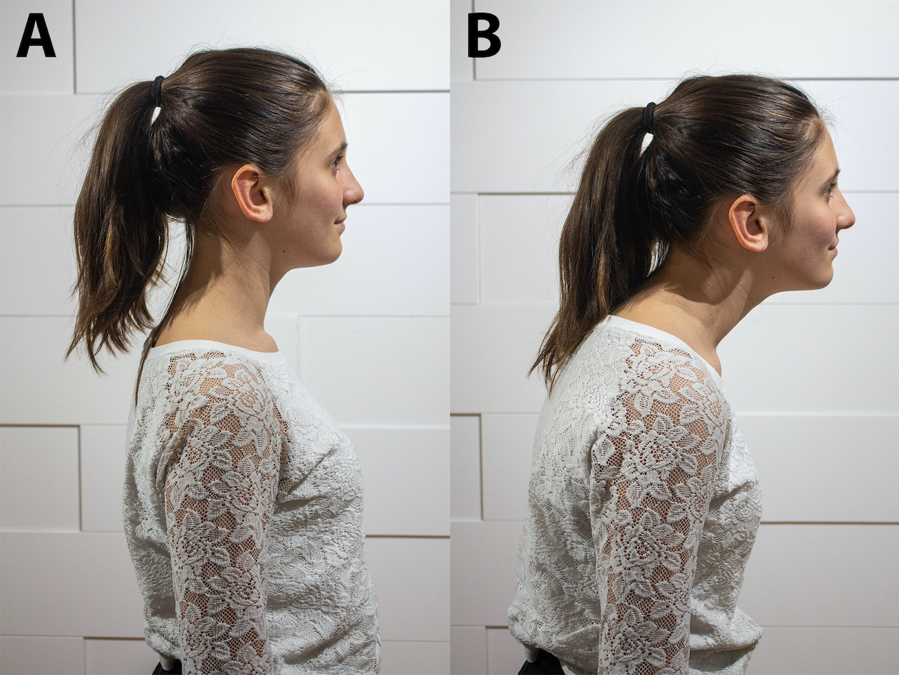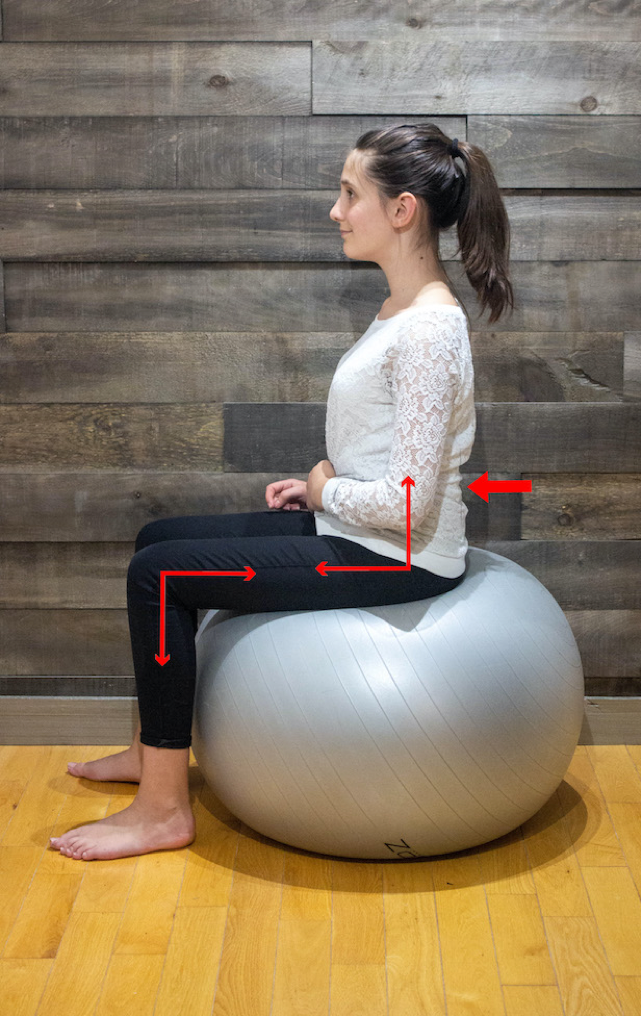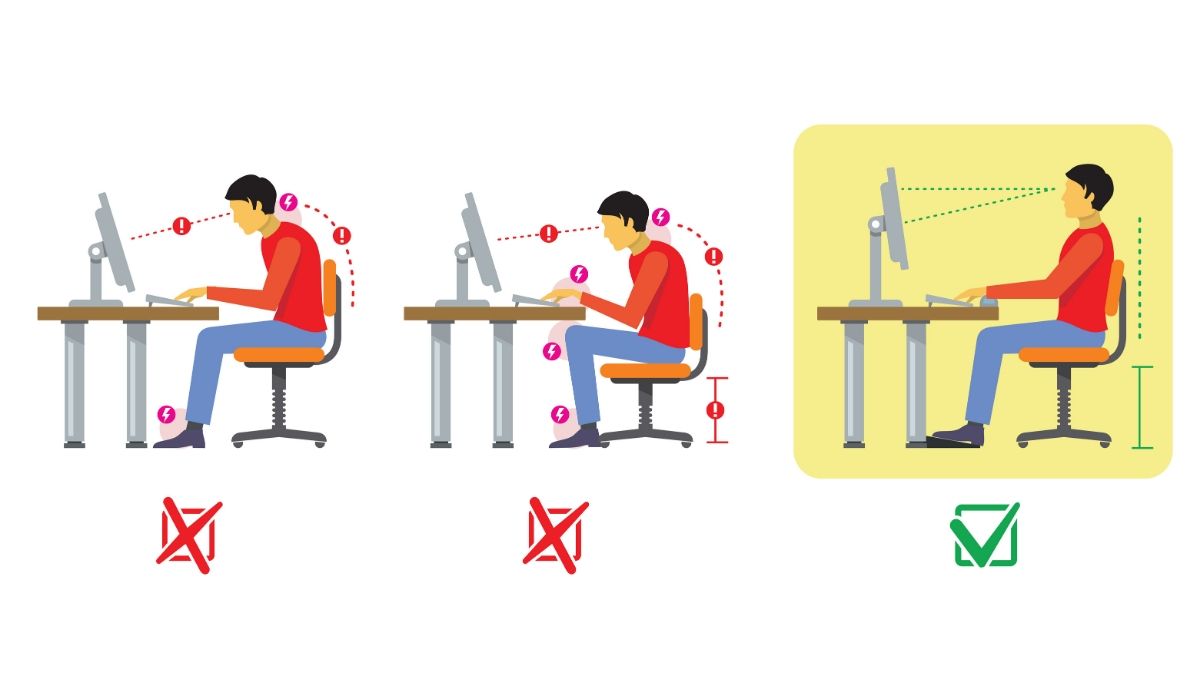What is the impact of posture on migraine?
Can posture affect migraine?
Yes, especially when the posture deviates from the ideal static posture. Most people define posture as how straight you stand or sit. But that’s just part of the definition. Let’s dig a bit deeper.
- Static posture: It is the posture of a person in a given position. For example, we have the sitting, lying down, or standing static posture.
- Redressed static posture: For standing and sitting postures, it refers to trying to straighten ourselves as much as possible. We do not all have the same body shape. Some people have more or less pronounced spine curvatures. This aspect is highly genetic and doesn’t seem to be linked to the existence or absence of migraine.
- The ideal static posture: It refers to the posture that makes it possible for us to straighten ourselves as much as possible, but with as little effort as possible.
- Postural attitude: Trying to maintain a proper static posture by activating the wrong muscles. This may lead to chronic muscle tension that can contribute to headaches.
- Dynamic posture: It refers to changes in posture during body movements. Someone can have an ideal cervical posture and non-optimal cervical posture during arm or trunk movements. The assessment of the dynamic posture is complex and is usually done by a health professional.
What is the «head forward» posture?
Some people have a loss of the normal cervical curvature, characterized by a head protruding or sticking forward (Fig 1). There is a controversy in the various studies as to whether there is a relationship between this posture and migraine. However, as it is known to contribute to the development of tension headaches, it probably plays a role in some people suffering from migraine.

Figure 1. A) Normal posture B) Anteriorized head posture.
The static head posture may change during the day. If fatigue sets in and the head is increasingly moving forward in a prolonged sitting position, the result is increased muscle tension. The tendency to adopt a head-forward posture over time has been linked to headaches.
How can I improve my posture to avoid pain and migraine?
An assessment by a physiotherapist could help you to choose the rights exercises to strengthen and stretch. See our post on this topic.
Should I use a device to support my static posture?
One might be tempted to support the upper part of the body with a device. Many are on the market. It is not advisable to use this type of device. These devices can be useful in acute conditions or to check the impact of a posture on pain. However, in the long run the muscles that are vital for a good posture weaken instead of getting stronger, which can make the problem worse. Some products may even stimulate the wrong muscles.
Should I try to stay still in my ideal static sitting posture?
No. this is one of the worst mistakes to make. Studies have shown that the more we shift positions in a chair, the less likely we are to develop pain.
Sustained muscle activity leads to the accumulation of waste in muscle tissue, making it more acidic. When the acid levels become enough, we may feel some discomfort. These discomforts have the function of making us move because the movement activates blood circulation and helps the muscle tissue to get rid of waste. To avoid discomfort, try shifting position in your chair frequently. Take a short break to stand, stretch and hydrate (See this post).
Should I sit on an exercise ball?
Results about the benefits of using an exercise ball to sit are mixed. If you want to try an exercise ball, limit the use of it to a maximum of twice a day for 30 minutes each time. These balls do not provide lumbar support, which leads to the overuse of stabilizing muscles. While it may be advisable to exercise these muscles, it can lead to their exhaustion, ultimately resulting in increased muscle tension and pain. It’s also important to adjust the height of the ball.

Figure 2. Adjusting the height of the ball. The knees and hips should be at right angles. The pelvis should never be lower than the knees. Effort should also be made to maintain the hollow in the lower back.
Is avoiding sitting for long periods of time a good idea?
Absolutely! It is advisable to get up regularly and walk for some time, for example, the time taken to go and fill one’s glass with water. It would be in the interest of people who are very absorbed in their work to set a timer.
Similarly, standing work desks are becoming increasingly popular, and more affordable. If one wishes to move in this direction, the ideal will be to consider adjustable workstations that make it possible to alternately assume standing and sitting positions.
In case of difficulties, persistent problems or questions, do not hesitate to consult a t physiotherapist or occupational therapist skilled in workstation assessment.
References
[1] Jull G, Sterling M, falla D, et al. Whiplash, Headache, and Neck Pain: Research-Based Directions for Physical Therapies. 2008; Chuchill Livingstone.
Post#724
Tags In
3 Comments
Comments are closed.
Categories
THE MIGRAINE TREE
- BRANCHES
- ACUTE TREATMENTS
- DEVICES AND NEUROMULATIOIN
- PREVENTIVE TREATMENTS
- PROCEDURES AND INJECTIONS
- SELF-CARE AND LIFESTYLE
- SOCIAL LIFE
- TRUNK
- ROOTS
OTHER CATEGORIES





[…] and posture isn’t always on our minds. However, it should be for the sake of our brains. Migraine Canada describes the various posture positions, including the ideal static posture and those that may […]
[…] home, and posture isn’t always on our minds. However, it should be for the sake of our brains. Migraine Canada describes the various posture positions, including the ideal static posture and those that may […]
[…] home, and posture isn’t always on our minds. However, it should be for the sake of our brains. Migraine Canada describes the various posture positions, including the ideal static posture and those that may […]